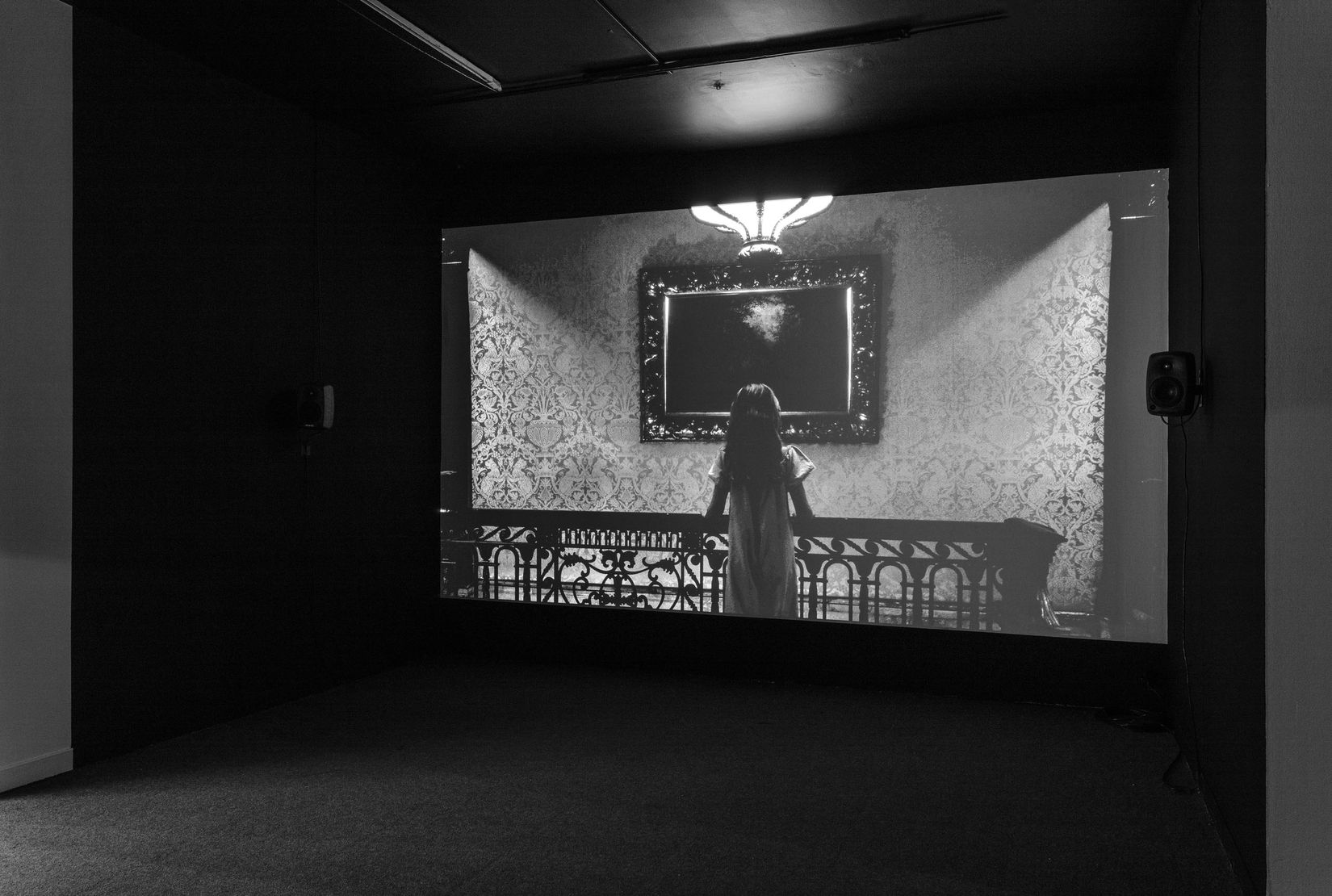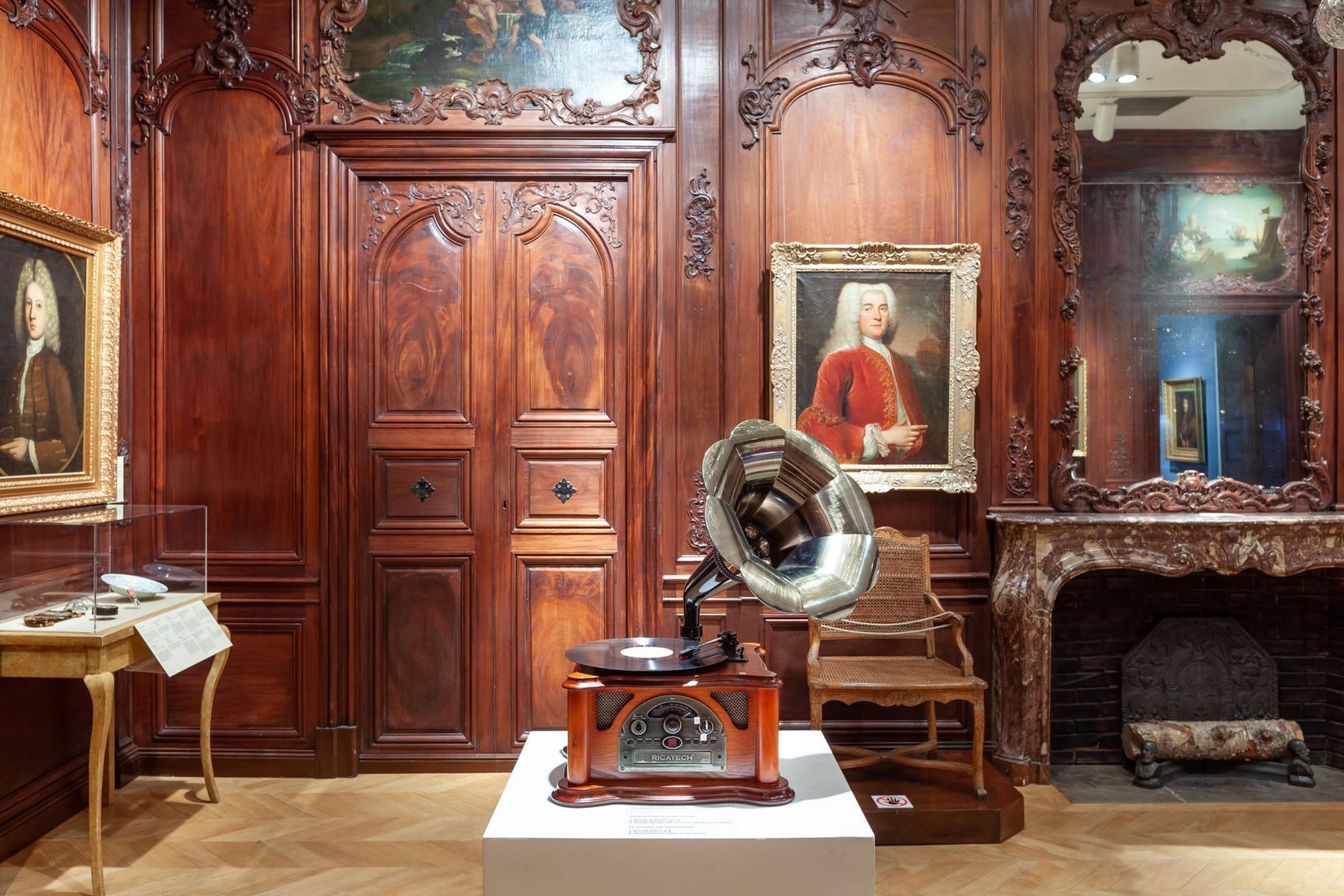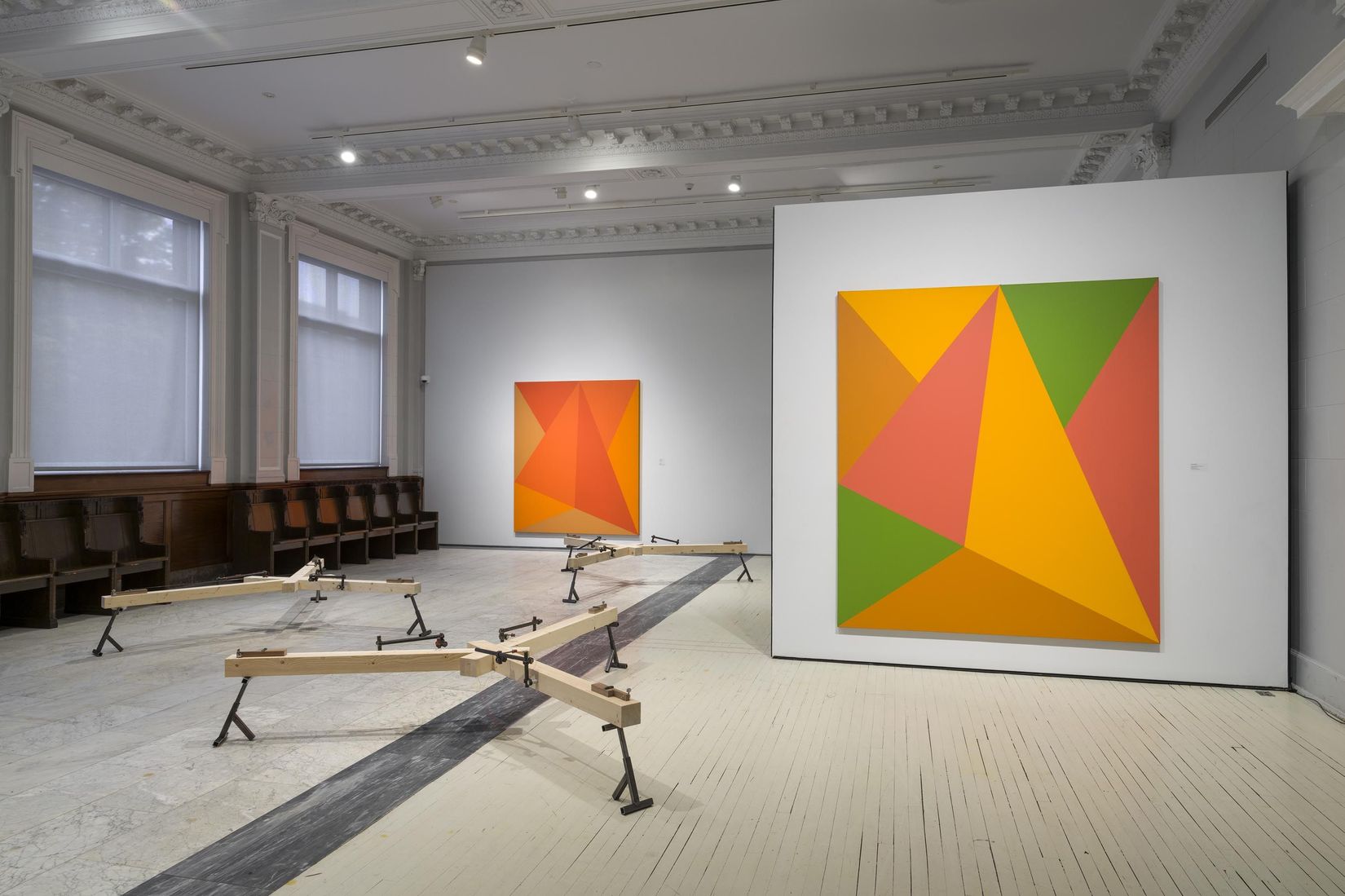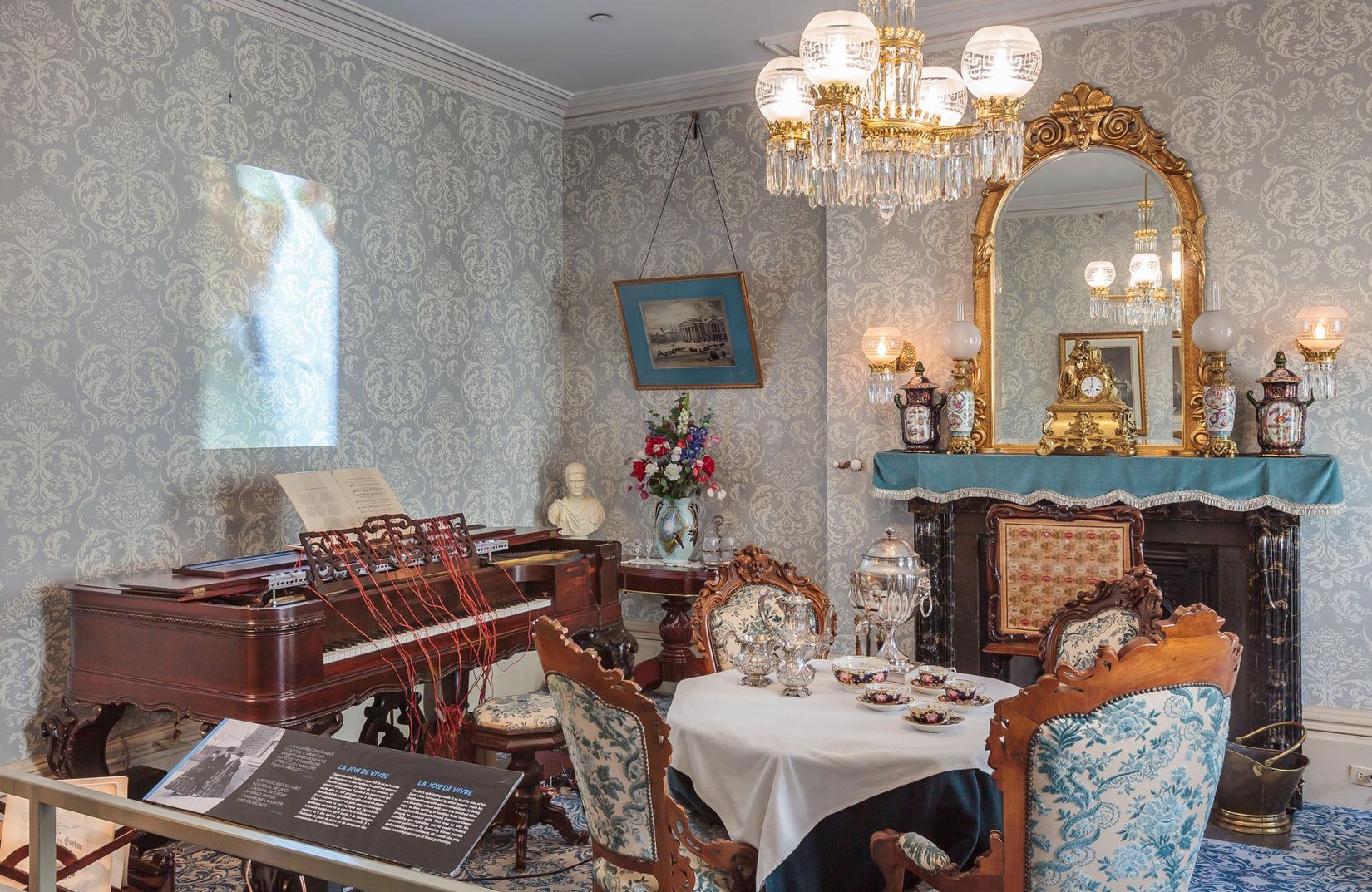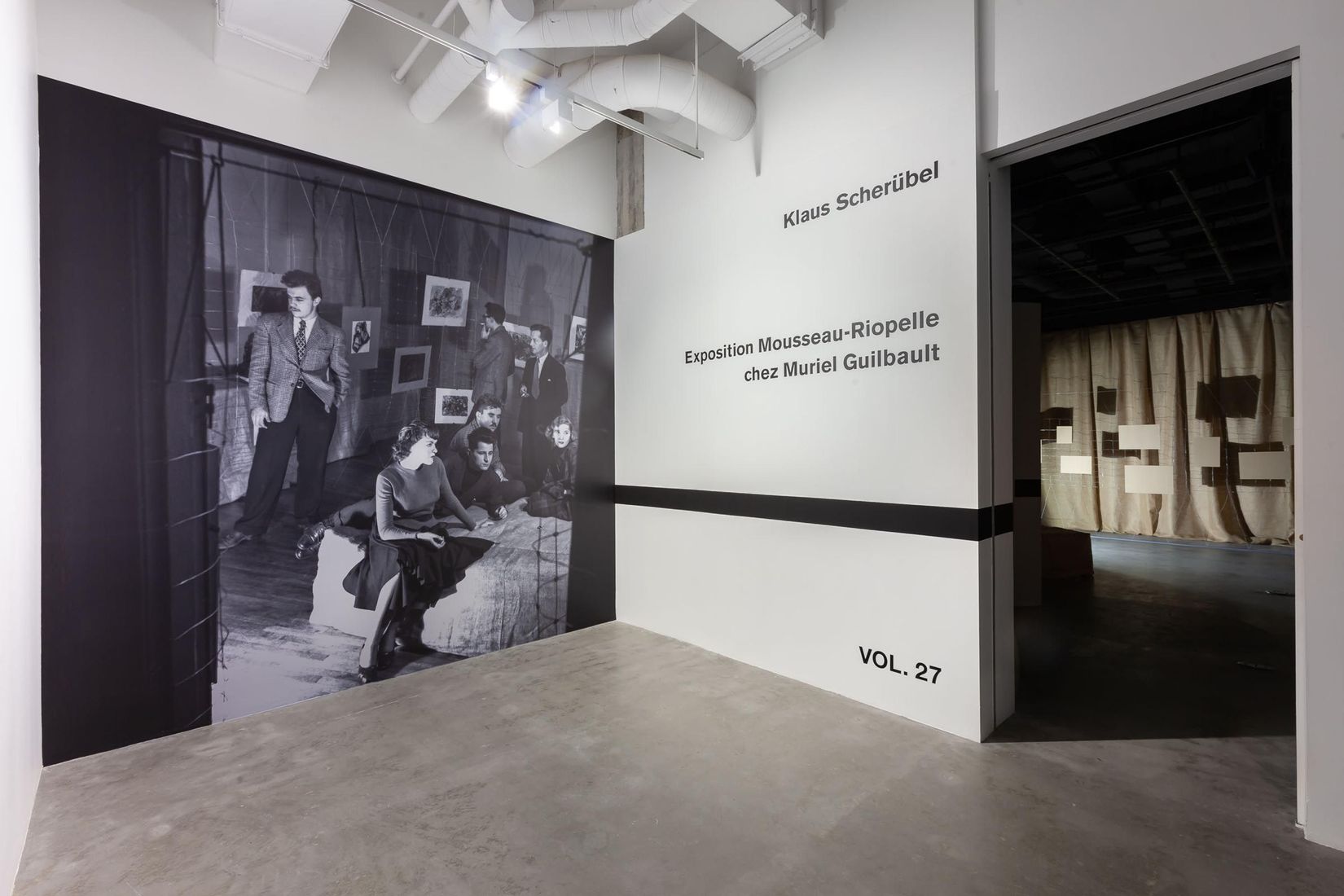
Period rooms
8 art experimentations
24 historic interiors
2019.06.12 - 10.20
The period room offers a fascinating experience of space and time: it locates visitors in an interior reconstituting a past that seems remote, and frozen for eternity. This dizzying anachronistic effect is accentuated when such rooms are reconfigured from the point of view of the present day, through artists’ interventions. The latter can elicit new narratives, whether historical or fictional, or foster associations with a time that is long gone. In so doing, each intervention creates a temporary opening into the past represented by the period room in question, encouraging visitors to engage in new and unfamiliar experiences there.
Curated by Marie J. Jean, this event presents experimentations by seven contemporary artists—Steve Bates, Thomas Bégin, Pierre Dorion, Frédérick Gravel, Jacqueline Hoàng Nguyễn, Jocelyn Robert, and Claire Savoie—in the period interiors of the Château Dufresne, the Château Ramezay, Saint Joseph’s Oratory of Mount Royal, the Sir George-Étienne Cartier residence, and the Guido Molinari Foundation. Concurrently, at VOX, centre de l’image contemporaine, Klaus Scherübel has produced an art intervention that employs the period room format to reconstitute two exhibitions organized in 1947 by the Automatist artists.
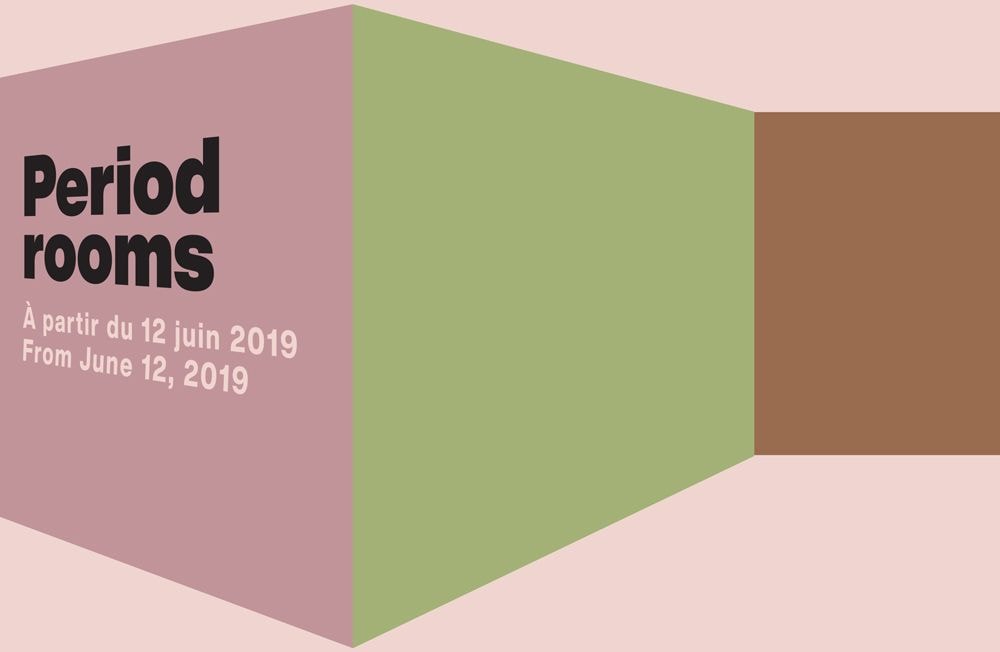
MARIE J. JEAN
Museums often use the device of the period room to reconstitute interiors typical of a particular historical period. First employed in the 19th century, the practice has a dual aim, archeological and pedagogical: it seeks to reproduce an interior based on its extant material traces as well as convey knowledge about it. It also provides insight into the stylistic characteristics of specific eras and currents—e.g., Renaissance, Classical, Victorian, Orientalist, Rococo—while showcasing diverse artefacts to create the illusion of a typical interior where people probably lived. Period rooms are used in several museums and historical interpretation sites in Montreal. The reconstitutions involved, however, rely not so much on principles of authenticity or originality—the collections of objects and woodwork on view are not always the originals—as on the idea of presenting noteworthy historical episodes in the manner of a “freeze frame.”
Exhibiting an immediate image of a bygone era rests on the fantasy of encapsulating time, of suspending it, so as to access it from the present, anachronistically. The (hi)stories emerging from this “time machine,” however, organized into “periods” or “eras”, are fairly often abstract. What can these reconstituted exhibitions—this Victorian living room, the Salle de Nantes, the Oriental smoking room, the study, the artist’s studio, the former chapel—reveal to us? This representational device nonetheless fascinates, emerging with such familiarity yet remaining improbable—likely because the period room is eternally fixed in a past that is now inaccessible, impossible to reinstate in its entirety.
(Hi)stories are nevertheless stated in these period rooms in the form of institutional narratives, although they remain rooted in a certain imaginary, in a vision of the past that is necessarily partial—in both senses of the term. These Montreal museums reconstitute and preserve interior spaces in which prominent figures in the history of Quebec and Canada dwelled and worked: industrialists Oscar and Marius Dufresne, the Governor of New France Claude de Ramezay, Brother André, politician George-Étienne Cartier, visual artist Guido Molinari, and the Automatist group. For explanatory purposes, the period room exhibit is often augmented by educational materials consisting of texts and documentation, or guided-tour commentary, helping contextualize the (hi)story of the collections shown.
Only rarely, though, do institutions attend to sound materials—e.g., musical compositions, historical recordings, voiceovers, ambient sound or sound design—which could generate novel experiences. And yet, sound has the capacity to alter the visitor’s visual perception of a space and situate them in different locations, narratives or levels of reality. The challenge for the artists and museums taking part in this project is therefore to design and show art interventions that use sound experimentations as their starting point. These will be complemented by performances, pictorial works, installations and reconstitutions that will allow us to rediscover the period room from unexpected perspectives.
This is one of the 200 exceptional projects funded through the Canada Council for the Arts’ New Chapter program. With this $35M investment, the Council supports the creation and sharing of the arts in communities across Canada. This event was also made possible with financial support under the Agreement on the Cultural Development of Montréal between the City of Montréal and Québec government.
